In today's competitive business landscape, understanding your customers' needs and preferences is crucial for success. One of the most effective ways to gain insights into customer satisfaction and preferences is through feedback.
Customer feedback provides valuable information that can help you improve your products, services, and overall customer experience, making it a key driver of long-term business growth. Most organizations never miss any opportunity to interact with their customers to learn about them.
In this blog, we will explore various ways to collect customer feedback that can help you improve your products, enhance your customer service, or simply gain a better understanding of your customers. We will also look at some practical tips and strategies for collecting and leveraging customer feedback effectively.
TL;DR
-
Customer feedback is vital for understanding customer needs and improving business performance. It builds user loyalty, informs product development, offers a competitive advantage and shapes brand perception.
-
There are various methods to collect customer feedback, including email surveys, website surveys, in-app surveys, SMS surveys, mobile surveys, among others that can help you collect customer insights.
-
By utilizing multiple channels, keeping surveys short and simple, personalizing the experience, using visual elements, leveraging NPS, monitoring social media, and building online communities, businesses can collect actionable feedback effectively.
-
Customer feedback must be collected immediately after interactions and during critical touchpoints using CSAT tools. Engaging customers while they are actively involved can yield valuable insights.
-
Zonka Feedback offers a comprehensive solution to collect customer feedback and analyze it to take action and close feedback loop. Book a demo to start improving your customer experience today.
Elevate CX with Customer Feedback🔥
Collect real-time, in-moment feedback at all touchpoints in customer journey and leverage feedback insights to transform customer experience.

Why Is Customer Feedback Important?
Understanding the importance of customer feedback is crucial for businesses looking to thrive in today's competitive market. Here are some key reasons why collecting customer feedback is essential:
-
Insight into Customer Needs: Customer feedback helps gather valuable insights into what customers like or dislike about your products/services.
-
Identifying Improvement Areas: Feedback from new customers and potential customers helps identify areas where improvements can be made to meet customer expectations better.
-
Building Customer Loyalty: Actively seeking and responding to customer feedback can build trust and loyalty among customers.
-
Product Development: Customer feedback provides ideas and insights for new product development, feature requests, or enhancements.
-
Competitive Advantage: Utilizing feedback can give you a competitive edge by addressing customer concerns and staying ahead of competitors.
-
Enhanced Customer Experience: Addressing feedback enhances the overall customer experience, leading to increased customer satisfaction score and customer retention.
-
Brand Perception: Feedback shapes how your brand is perceived, helping maintain a positive brand image.
Top 10 Ways to Collect Feedback from Customers
Let us look at the most popular ways to obtain feedback from your customers that also form the core of customer feedback strategy and can help you improve customer service interactions, product and customer experience.
1. Email Surveys
Email surveys are one of the best customer feedback methods as it involves sending surveys via email to collect direct feedback from customers. They are convenient for customers to respond to at their own pace and can be targeted based on customer segments.
An email survey is ideal for large-scale feedback collection from the customer base, customer satisfaction surveys, and post-purchase feedback. They offer the advantage of including rich media and visuals to enhance the survey experience, making them engaging for respondents.
You can conduct email surveys by
-
Sending Email Survey Invitations: This involves sending emails to customers inviting them to participate in a survey by clicking on a link or button included in the email.
-
Email Embedded Surveys: Surveys can be embedded directly into the body of an email, allowing customers to respond to the survey without leaving the email client.
2. Website Surveys
Website surveys are displayed on a website to capture visitor feedback. They are useful for getting feedback on website usability, content relevance, and overall user experience. Web surveys have shown an average completion rate of 30-40%, making them an effective method for gathering insights from website visitors.
Customer surveys shared through the website feedback form provide the advantage of capturing feedback from visitors while they are engaged with your brand, helping identify pain points and areas for improvement.
You can conduct website surveys in the form of
-
Web Embedded Surveys: These surveys are integrated directly into a website's content or design, appearing as a part of the webpage.
-
Popup Surveys: Popover surveys are small, overlay windows that appear on the webpage, typically triggered by user actions such as scrolling or spending a certain amount of time on the page.
-
Website Feedback Button: A website feedback button is a persistent button or widget placed on a website that allows visitors to easily access and submit feedback.
3. In-app Surveys
In-app surveys are integrated into mobile apps to get feedback from users. They provide real-time insights into user satisfaction and app usability. In-app feedback is perfect for collecting feedback while users are actively engaged with your app, allowing for targeted surveys based on user interactions within the app.
A customer survey shared in-app is effective for identifying bugs, issues, and areas for improvement, helping enhance the overall user experience.
For example, a gaming app might use an in-app survey to obtain feedback on a new feature or level right after users complete it. This real-time feedback helps developers improve the user experience based on fresh insights.
4. SMS Surveys
SMS surveys involve sending surveys to customers via text message. They have a whopping 98% open rate and are ideal for collecting quick feedback from your customers on the go. These surveys reach customers directly on their mobile devices, making it convenient for customers to respond immediately with short, quick answers in direct messages.
You can use these surveys if you have to collect time-sensitive feedback requests and customer satisfaction ratings as they are a simple and effective way to get customer feedback.
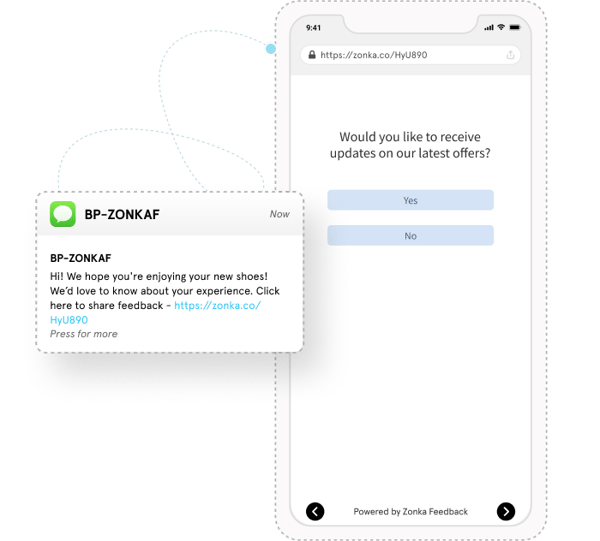
5. Mobile Surveys
Mobile surveys are designed for mobile devices, including smartphones and tablets. They provide a convenient feedback channel for mobile users, helping improve user engagement and overall customer satisfaction.
Mobile app surveys can be particularly helpful in several scenarios:
-
Mobile App Feedback: Gathering feedback from users about their experience with a mobile app, including usability, features, and performance.
-
Post-Purchase Feedback: Soliciting feedback from your customers after they have made a purchase to assess their satisfaction with the product, the purchase process, and to gather suggestions for improvement.
-
Retail and Shopping Experience: Gathering feedback from customers about their shopping experience, preferences, and suggestions for improvement.
-
Travel and Hospitality: Collecting instant feedback from travelers about their experience with booking, accommodation, and on-site services to enhance the overall travel experience.
6. Survey Links
Survey links are distributed through links shared via email, social media, or websites. They provide a versatile method for distributing surveys through various channels, allowing for easy sharing and tracking of survey responses.
Survey links can be particularly helpful in collecting customer feedback related to
-
Restaurant Dining Experience Feedback: After dining at a restaurant, providing a survey link on the receipt or via email can collect feedback on food quality, service, ambiance, and overall dining experience. Survey links offer a convenient way for customers to share their feedback and for restaurants to improve their services.
-
Travel Experience Feedback: For travelers booking services online, sending a survey link after their trip can get feedback on the booking process, accommodation, transportation, and overall travel experience. Survey links offer a simple and direct way for travelers to share their feedback.
-
Virtual Event Feedback: For online events like webinars, post-event survey links in emails or on platforms enable easy feedback collection on content, speakers, and suggestions, eliminating the need for paper surveys or in-person interviews.
7. QR Codes
QR codes are linked to surveys that customers can scan using their smartphones. These surveys provide a quick and easy way for customers to access surveys, making them suitable for product packaging, marketing materials, and physical locations. They help receive feedback from offline customers and track responses, offering a convenient feedback collection method. Businesses can easily create and make QR codes for these surveys using online QR code generator tools.
You can use QR code surveys in these scenarios:
-
Product Packaging: Customers can scan QR codes on product packaging to provide feedback on the product, packaging, or their overall experience.
-
In-Store Feedback: Placing QR codes in-store allows customers to share feedback on their shopping experience, product availability, and store layout.
-
Event Feedback: Using QR codes at events enables attendees to provide feedback on sessions, speakers, and event organization.
-
Restaurant Feedback: QR codes on menus or receipts can collect feedback on food quality, service, and ambiance.
-
Feedback Stations: Placing QR codes at feedback stations in public places like airports or tourist attractions allows visitors to share their experiences.
8. Kiosk Surveys
Kiosk surveys are displayed on kiosks at physical locations for customers to provide feedback. They offer an on-site feedback collection method for businesses and organizations that have physical locations and want to get feedback from customers who are interacting with their brand in person.
Kiosk surveys are most effective for:
-
Retail Stores: Collect feedback from customers about their shopping experience, product selection, and store layout to improve customer satisfaction and enhance the shopping experience.
-
Events: Get feedback from attendees at conferences, trade shows, or other events to improve future event planning and execution.
-
Restaurants: Collect feedback from diners about their dining experience, food quality, service, and ambiance to enhance the overall dining experience.
-
Hotels: Receive feedback from guests about their stay, including room quality, amenities, and customer service, to improve guest satisfaction and loyalty.
-
Healthcare Facilities: Obtain feedback from patients about their experience with healthcare services, appointment scheduling, and overall satisfaction to improve patient care and satisfaction.
9. Chat Surveys
Chat surveys are integrated into chat interactions with customers. They offer a conversational approach to collect live chat data, providing immediate insights into unhappy customers and their issues. They can be used to obtain feedback from customers who prefer chat-based interactions, making them an effective tool for enhancing customer engagement and satisfaction.
You can use chat surveys to collect customer feedback in these scenarios:
-
E-commerce Support: In e-commerce, chat surveys can collect feedback on support quality of customer-facing interactions, product inquiries and incorporating consulting for e-commerce into your strategy can significantly enhance the quality of support provided, leveraging expert insights to optimize customer interactions and satisfaction. Consulting services can provide tailored advice on best practices for engagement and feedback collection, making your e-commerce support even more effective.
-
Customer Service Feedback: For customer service teams using chat tools like Intercom, surveys can be embedded in the chat interface to gather instant feedback on support team performance and service quality.
-
Product Support: Chat surveys can be used to collect feedback on product features, usability, and satisfaction, providing valuable insights for product improvement.
-
Training Evaluation: For online training sessions or courses, chat surveys can be used to collect feedback on the content, instructor effectiveness, and learning experience.
10. Interviews & Focus Groups
Interviews and focus groups involve in-depth discussions with customers to gather qualitative feedback. They provide rich insights into customer preferences and behaviors, offering a detailed understanding of customer opinions. In 2024, customer interviews and focus groups have been shown to provide deeper insights, helping identify trends and patterns in customer feedback.
They are perfect for exploring complex issues, understanding customer motivations, and gathering detailed feedback on specific topics or products.
Tips for Collecting Customer Feedback for Maximum Response
Let us look at some of the best practices and tips that can help you get customer feedback directly from target customers and gain interesting insights.
#1. Utilize Various Channels
While we have discussed so many ways to gather customer feedback, the best approach would be to leverage multiple channels such as email, website, and in-app to reach a wider audience and gather diverse feedback.
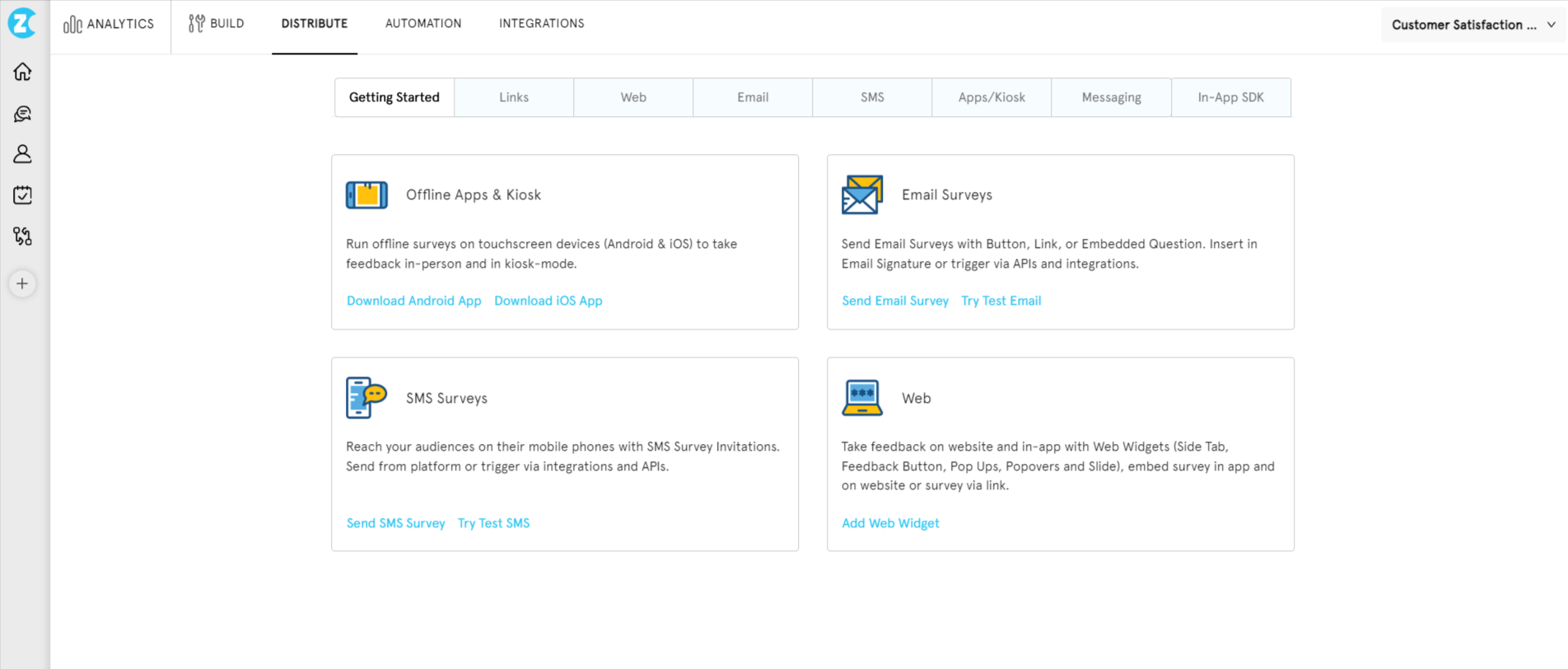
By doing so, you not only gather feedback that is diverse but also ensure that you connect with customers on their preferred platforms, increasing the likelihood of survey responses. This approach also helps you leverage user segmentation to ensure that you gather feedback from different customer segments, providing a more comprehensive understanding of customer sentiment.
#2. Keep Surveys Short & Simple
Design feedback forms that are easy to understand and quick to complete. Lengthy or complex surveys can deter customers from providing feedback.
For example, instead of asking multiple open-ended survey questions, use quantitative feedback such as survey rating scales or multiple-choice questions to streamline the survey. By keeping surveys concise and straightforward, you can improve response rates and gather more actionable insights.

#3. Personalize the Experience
Personalizing the feedback experience involves tailoring surveys to individual customers based on their past interactions and preferences. For example, if a customer has recently purchased a subscription to a streaming service, you can send them a survey asking about their favorite genres or shows, and use this information to recommend similar content in the future.
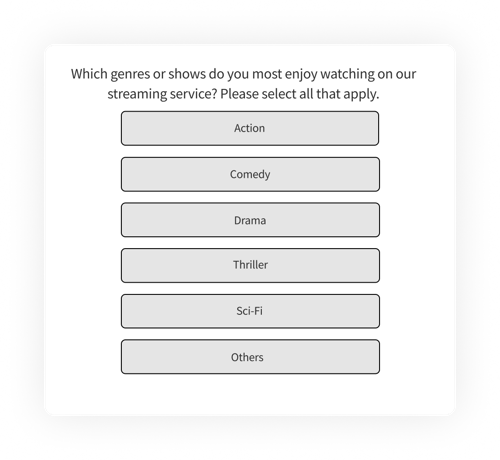
This personalized approach makes the survey more relevant and engaging for the customer, increasing the likelihood of their participation. Additionally, by asking targeted questions based on their previous interactions, you can encourage customers to offer detailed and honest feedback.
#4. Use Visual Elements to Engage Customers
Utilize visual elements like icons or images in your feedback process to boost engagement and ease of use. Visual cues help customers navigate the survey effortlessly, making it more visually appealing. This approach increases response rates, especially for those who prefer quick interactions.
For instance, instead of asking customers to rate their experience on a scale of 1 to 5, you could use a visual scale with smiley faces ranging from frowning to smiling. This not only makes the survey more visually appealing but also makes it easier for customers to quickly express their feelings about their experience.
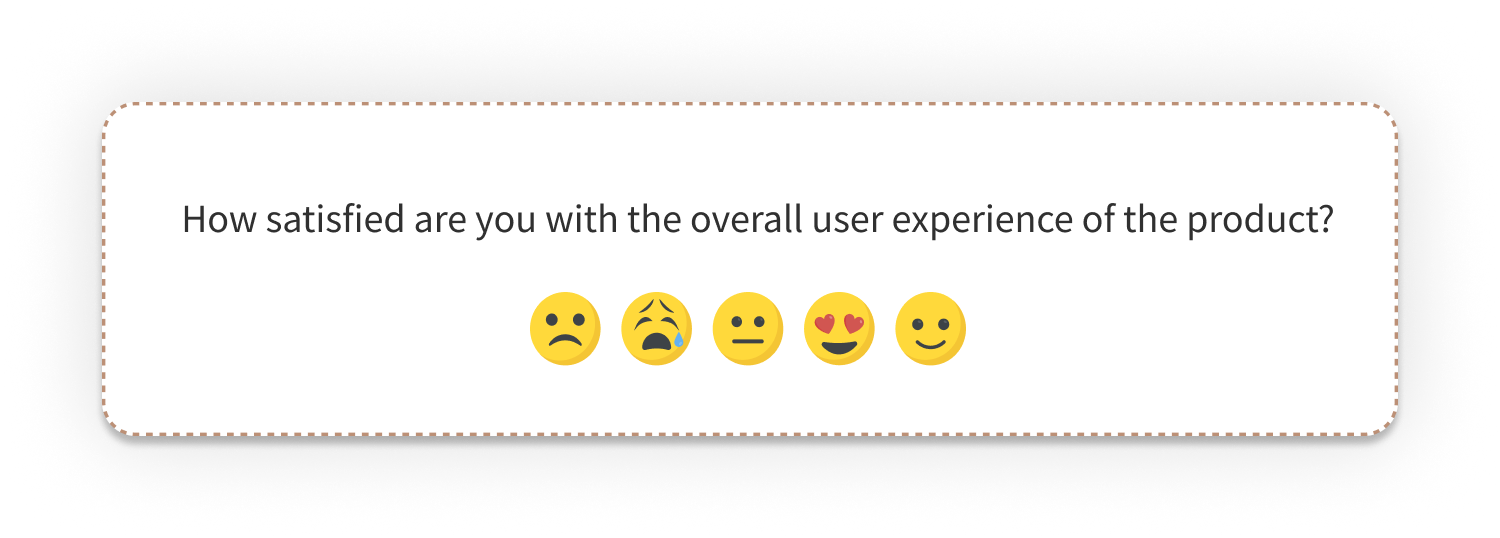
#5. Use NPS to Evaluate Loyalty
Net Promoter Score or NPS is a straightforward metric that correlates with customer behavior. Customers who are willing to recommend a product or service to others are more likely to be loyal and repeat customers.
NPS surveys can improve the quality of feedback collection as it provides a benchmark for tracking customer loyalty over time and comparing it to competitors or industry standards. By regularly collecting NPS feedback through survey forms, you can continuously improve your products, services, and overall customer experience based on real-time customer sentiments.

#6. Monitor Social Media Channels
By monitoring social media platforms, you can stay updated on customer sentiments, comments, and online reviews since customers speak openly there. This real-time candid feedback can be used to address customer concerns promptly, engage with customers, and build brand loyalty.
For instance, a restaurant can respond promptly to negative online reviews on social media, showing proactive customer service and a commitment to feedback.
#7. Build an Online Community
Building online communities facilitates engagement between customers and the brand, enabling them to leave feedback, ideas, and experiences. Most companies leverage this as the sense of belonging in online communities enhances user loyalty and brand advocacy.
For instance, Sephora's Beauty Insider Community allows customers to share makeup tips, provide product feedback, and engage in surveys, strengthening brand loyalty. Online communities also serve as direct channels for obtaining feedback, conducting surveys, and testing new ideas or products.
When to Collect Customer Feedback?
Now that you know the different ways of collecting customer feedback, the next question that needs an answer is when is the best time to collect valuable feedback.
You must request feedback from every customer and collect it:
-
Immediately after interactions to ensure clarity and accuracy - post purchase
-
When it matters most, focusing on specific aspects of the experience.
-
While customers are engaged, using prompts or pop-up surveys.
-
Consistently from every customer interaction and across customer journey, regardless of platform.
Choosing the Right Customer Support Tool to Gather Customer Feedback
Listening to customer feedback is essential for the progress of your business, whether it's positive or negative feedback. To establish excellent customer experience, collecting actionable feedback is key. Online survey tools can help you acquire and retain customers, setting your business apart in the digital world.
Choosing a survey software that offers to create customer feedback surveys, various survey distribution channels, advanced analytics and reporting capabilities is crucial. Zonka Feedback is one of the best customer feedback tools that has all the mentioned features along with others such as custom-designed themes, multilingual support, sentiment analysis, advanced user segmentation, workflow automation, and more to easily close feedback loop.
Schedule a demo to explore its features and start collecting thoughtful feedback effectively to drive your business forward!
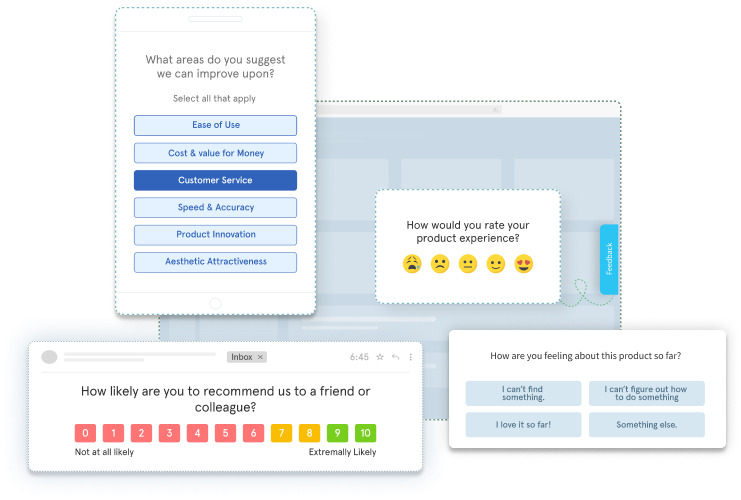

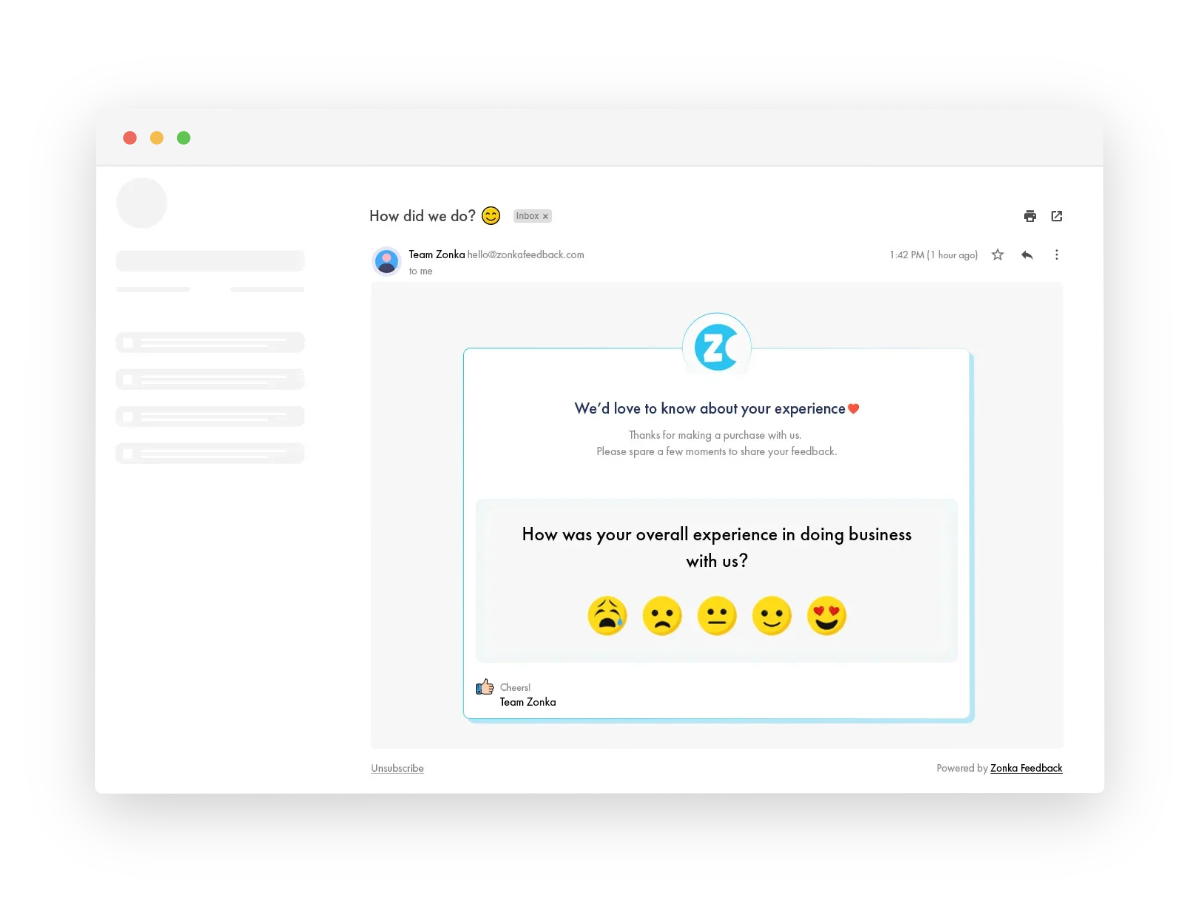
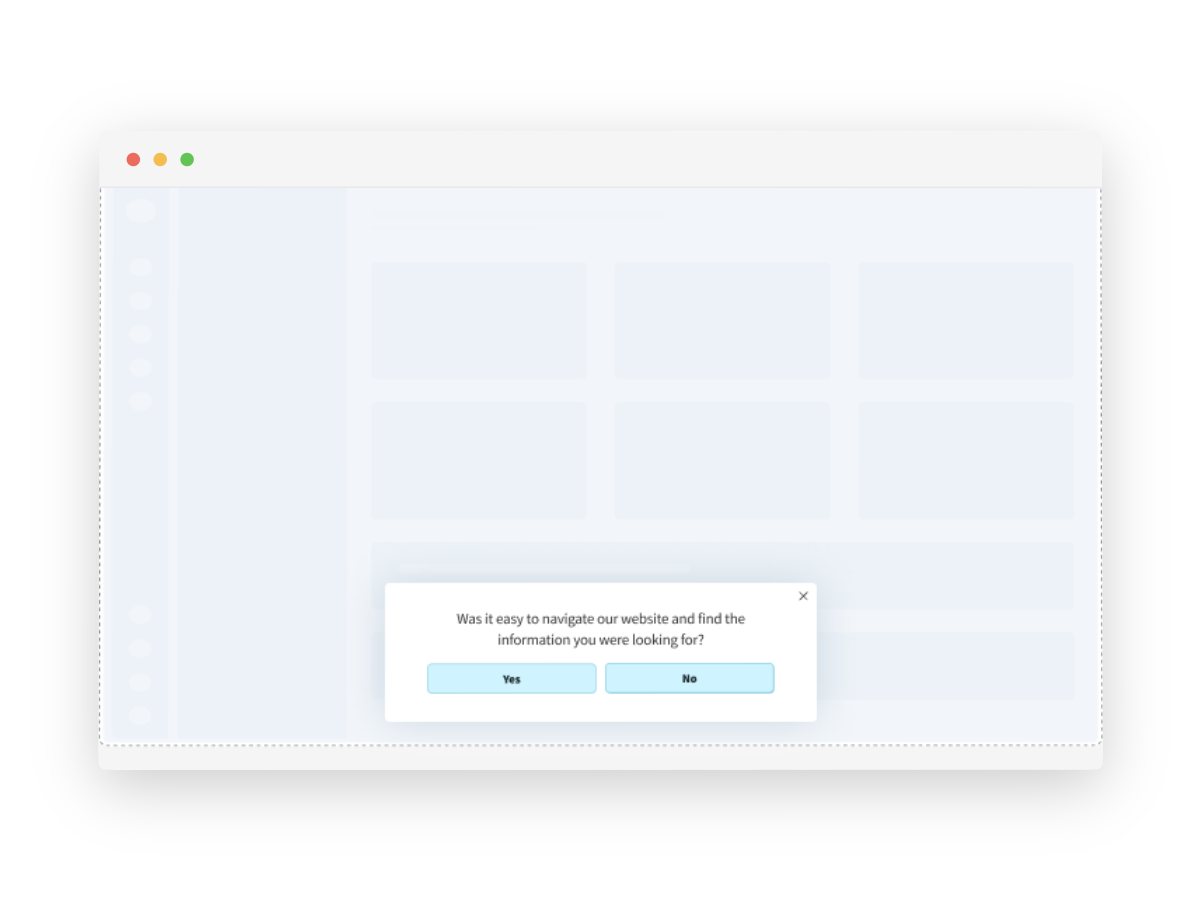
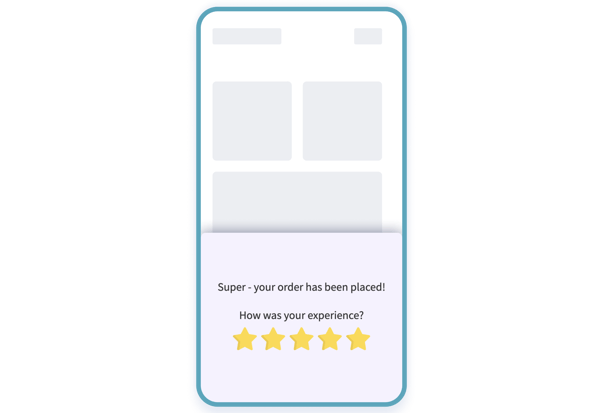
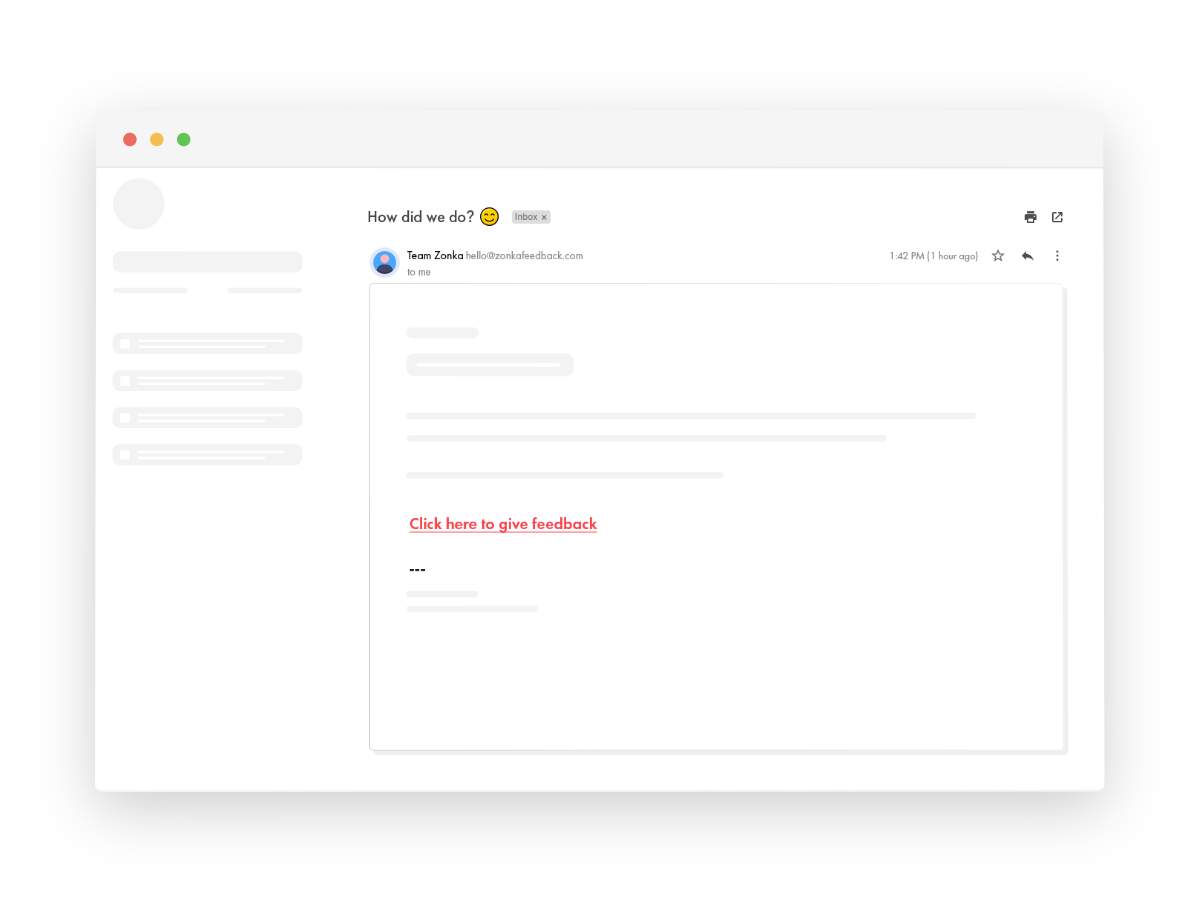
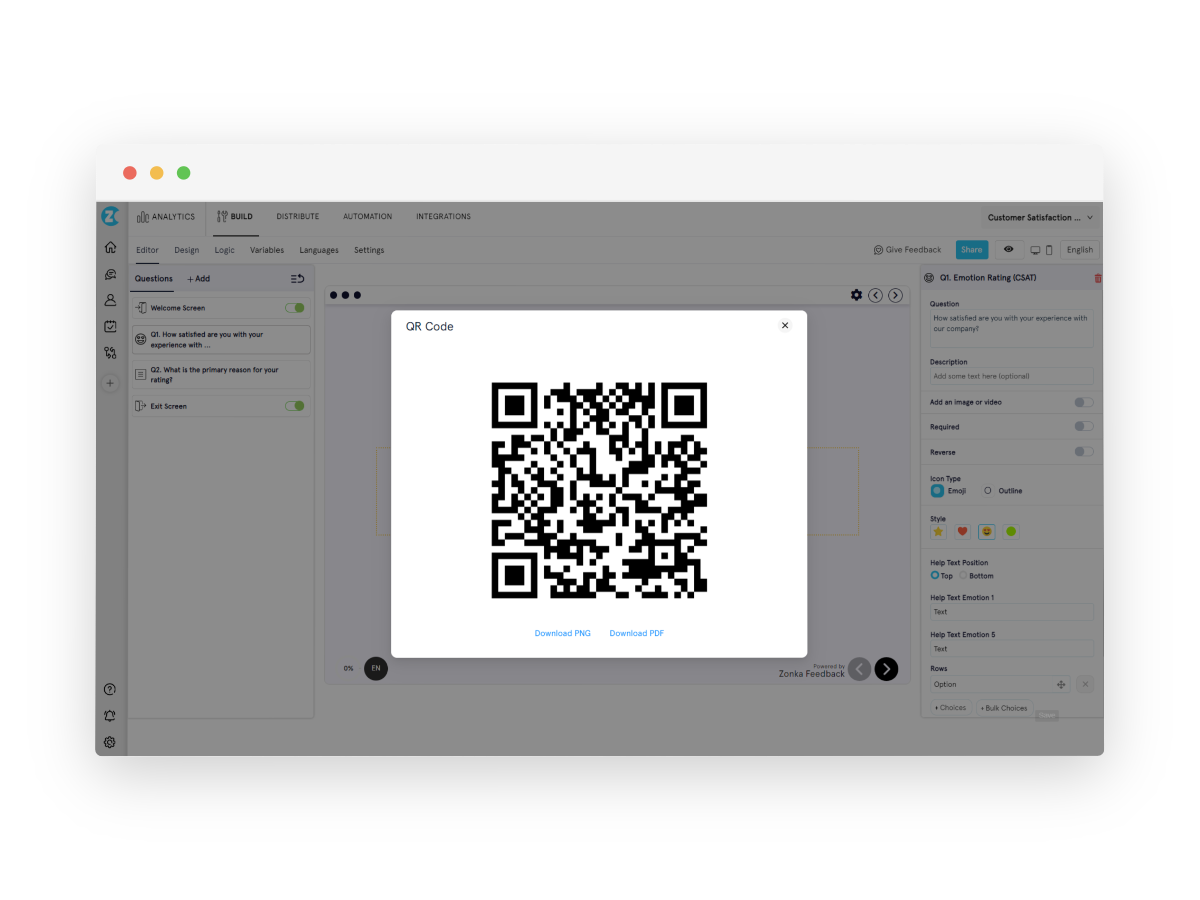


.png)


.jpg)
.jpg)
.jpg)

.jpg)